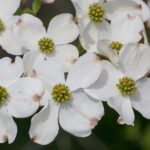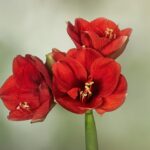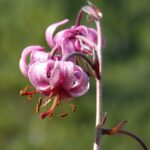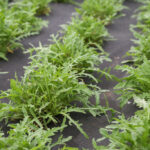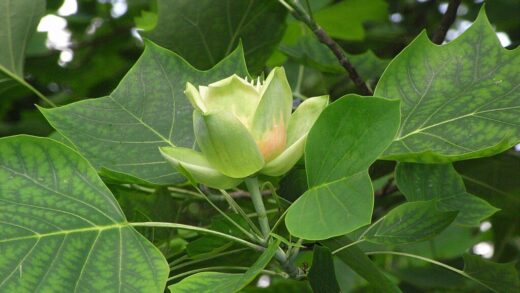The care of japanese barberry
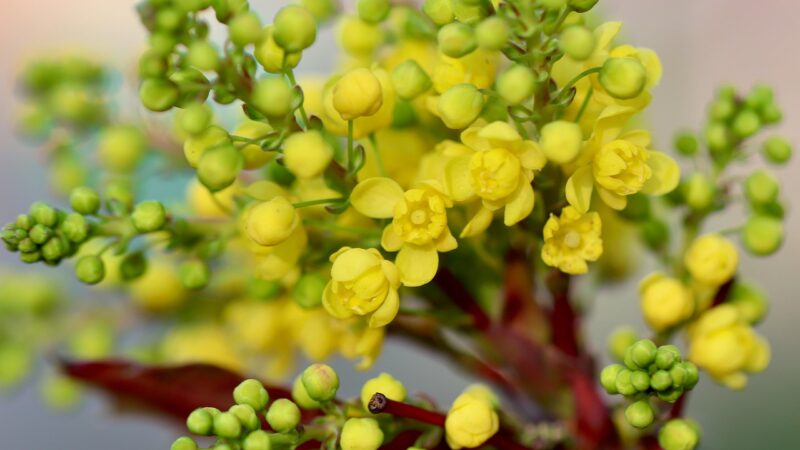
Japanese barberry is a remarkably resilient and versatile deciduous shrub, celebrated in horticulture for its hardiness and ornamental value. Its adaptability to a wide range of challenging conditions, including urban pollution and drought, makes it a frequent choice for landscape designers and home gardeners alike. This plant provides multi-seasonal interest, from its delicate spring flowers and dense summer foliage to its brilliant autumn colors and persistent winter berries. Proper care, while minimal compared to more demanding species, is essential to ensure the plant not only survives but thrives, reaching its full aesthetic potential and maintaining vigorous health over its long lifespan.
The foundation of successful cultivation lies in understanding the plant’s fundamental requirements and how they interact with the local environment. While known for its toughness, a well-cared-for Japanese barberry will exhibit more vibrant foliage, denser growth, and a more robust overall structure. This involves a holistic approach, considering everything from the initial site selection to ongoing maintenance practices throughout the seasons. Attending to these details helps prevent common issues such as stress-related diseases or pest infestations. A proactive care regimen ultimately leads to a more rewarding and visually appealing specimen in the garden landscape.
Effective care also means being mindful of the plant’s growth habits and potential for invasiveness in certain regions, where its management becomes an ecological consideration as well as a horticultural one. Responsible cultivation includes preventing its spread into natural ecosystems by selecting sterile cultivars or managing seed production through timely pruning. This stewardship ensures that the enjoyment of its ornamental qualities does not come at the expense of local biodiversity. The principles of good care therefore extend beyond the individual plant to its place within the wider environment.
Ultimately, the goal of a comprehensive care routine is to create a sustainable balance where the plant receives what it needs to flourish without excessive intervention. This includes providing the right soil conditions, appropriate moisture levels, and adequate sunlight to foster strong development. By mastering these core aspects of its care, any gardener can successfully cultivate Japanese barberry, transforming it into a stunning and reliable feature of their outdoor space. Its low-maintenance nature is a significant advantage, but this should not be mistaken for a complete lack of required attention.
Understanding soil requirements
Japanese barberry exhibits a remarkable tolerance for a wide spectrum of soil types, which is a key factor in its widespread popularity and success in diverse garden settings. It can perform admirably in soils ranging from sandy loams to heavier clays, demonstrating its inherent adaptability. However, the most critical soil requirement for this shrub is excellent drainage, as it is particularly intolerant of waterlogged conditions. Poorly drained or boggy soil can quickly lead to root rot, a serious and often fatal condition for the plant. Therefore, ensuring water does not stand around the root zone is paramount.
More articles on this topic
To achieve optimal growth, a soil that is moderately fertile and has a pH ranging from slightly acidic to slightly alkaline (6.0 to 7.5) is ideal. While the plant can survive in less-than-ideal pH levels, its nutrient uptake and overall vigor will be best within this range. Before planting, conducting a simple soil test can provide valuable insights into the existing pH and nutrient composition. This information allows for targeted amendments, if necessary, to create the perfect foundation for the shrub’s long-term health. Such preparatory steps are a wise investment in the future vitality of the plant.
When planting in heavy clay soil, which is prone to compaction and poor drainage, incorporating organic matter is highly beneficial. Materials such as compost, aged manure, or pine bark fines can significantly improve the soil structure, creating better aeration and facilitating water movement away from the roots. This amendment process should involve thoroughly mixing the organic material into the native soil rather than just adding it to the planting hole, which can create a “bowl” effect that traps water. This practice promotes a healthier root system that can expand easily into the surrounding earth.
Conversely, in very sandy soils that drain too quickly and have poor nutrient retention, the addition of organic matter serves a different but equally important purpose. Compost and other amendments help to bind the sandy particles together, improving the soil’s ability to hold both moisture and essential nutrients. This ensures that the plant has a more consistent supply of water and food, reducing the stress associated with rapid drying cycles. A well-prepared soil base, regardless of its original texture, is the cornerstone of a thriving Japanese barberry.
Site selection and placement
Choosing the right location for planting Japanese barberry is a crucial step that influences its health, growth habit, and the vibrancy of its foliage. This shrub performs best in a location that receives full sun, which is defined as at least six to eight hours of direct sunlight per day. Adequate sun exposure is directly linked to the intensity of its leaf coloration; cultivars with red, purple, or gold foliage will display their most brilliant hues when bathed in sunlight. In shadier conditions, these vibrant colors tend to fade to a less dramatic green, diminishing one of the plant’s primary ornamental features.
More articles on this topic
Beyond light requirements, it is important to consider the plant’s mature size and shape when selecting a site. Different cultivars of Japanese barberry vary significantly in their ultimate height and spread, from compact dwarf varieties to larger, more arching forms. It is essential to allow adequate space for the shrub to grow to its full potential without becoming crowded by other plants, buildings, or walkways. Providing sufficient room ensures good air circulation around the plant, which is vital for disease prevention, particularly in reducing the incidence of fungal issues.
The plant’s thorny nature should also be a practical consideration during site selection. The sharp spines along its stems make it an excellent choice for creating defensive barriers or deterrent hedges along property lines or in areas where foot traffic needs to be discouraged. However, this same characteristic means it should be planted away from high-traffic areas such as children’s play zones, mailboxes, or narrow paths where accidental contact is likely. Thoughtful placement minimizes the risk of injury and makes future maintenance tasks, such as pruning, safer and more manageable.
Finally, consider the ecological context of the planting site. In some regions, Japanese barberry is considered an invasive species due to its ability to spread via seed dispersed by birds and establish itself in natural woodlands. Before planting, it is responsible to check with local extension services or conservation authorities to determine its status in the area. Where it is known to be invasive, selecting sterile or non-fruiting cultivars is the most environmentally sound choice, allowing gardeners to enjoy its beauty without contributing to ecological disruption.
The importance of mulching
Applying a layer of organic mulch around the base of a Japanese barberry is a highly beneficial practice that contributes significantly to its overall health and reduces maintenance efforts. A two-to-three-inch layer of mulch, such as shredded hardwood, pine bark, or compost, serves multiple functions that create a more stable and favorable root environment. One of its primary benefits is moisture conservation; mulch acts as a barrier, slowing the evaporation of water from the soil surface. This is particularly valuable in hot, dry climates or during periods of drought, as it helps to maintain more consistent soil moisture levels and reduces the need for frequent watering.
Mulch is also extremely effective at suppressing weed growth. By blocking sunlight from reaching the soil surface, it prevents many weed seeds from germinating and makes it easier to remove any that do manage to sprout. This competition reduction is crucial, as weeds can rob the shrub of essential water, nutrients, and light, potentially hindering its growth and vigor. A clean, weed-free area around the base of the plant not only looks more aesthetically pleasing but also ensures that the barberry has unimpeded access to the resources it needs to thrive.
Furthermore, as organic mulch gradually decomposes over time, it enriches the soil with valuable nutrients and improves its structure. This slow release of organic matter enhances soil fertility, promotes a healthy microbial population, and improves both aeration in clay soils and water retention in sandy soils. This process of soil improvement is a long-term investment in the plant’s health, creating a more resilient and self-sustaining ecosystem right at its roots. This natural enrichment cycle reduces the long-term reliance on synthetic fertilizers.
When applying mulch, it is critical to keep it from being piled directly against the main stems or trunk of the shrub. A small, mulch-free circle should be maintained around the base to prevent the bark from staying excessively moist, which can lead to rot and create a welcoming environment for pests and diseases. The ideal application resembles a doughnut shape rather than a volcano, ensuring proper air circulation to the base of the plant while still providing all the benefits of a mulched root zone. Proper technique is key to maximizing the advantages of mulching.
Maintaining proper air circulation
Ensuring good air circulation around and through a Japanese barberry shrub is a fundamental aspect of its care, playing a critical role in disease prevention. When air can move freely, the foliage dries more quickly after rainfall, morning dew, or irrigation. This rapid drying time is crucial because many common plant diseases, such as powdery mildew, rust, and other fungal pathogens, thrive and proliferate in damp, stagnant conditions. By creating an environment where leaves do not remain wet for extended periods, the likelihood of these diseases taking hold is significantly reduced.
Proper spacing at the time of planting is the first and most important step in promoting good air circulation. It is essential to consider the mature size of the specific cultivar and provide ample room for it to grow without being crowded by neighboring plants, fences, or walls. When plants are spaced too closely together, the dense foliage creates pockets of still, humid air that are ideal for fungal spore germination. Following the spacing recommendations for each variety allows for the development of a healthy, open structure that is less susceptible to disease pressures.
Selective pruning also plays a vital role in improving air movement, particularly within the interior of the shrub. Over time, a Japanese barberry can become very dense with an accumulation of crossing branches and overgrown stems. Periodically thinning out the oldest and least productive canes, as well as any branches that are rubbing against each other, opens up the plant’s structure. This practice allows air and sunlight to penetrate deeper into the canopy, benefiting the overall health of the plant and further discouraging the development of fungal problems.
The surrounding garden environment can also impact air circulation. It is wise to avoid planting Japanese barberry in low-lying areas or enclosed courtyards where air tends to stagnate. Choosing a more open site where gentle breezes can naturally pass through the landscape will contribute to a healthier growing environment. Regular garden cleanup, including the removal of fallen leaves and debris from around the base of the plant, also helps by eliminating potential sources of fungal spores and improving airflow at the ground level.
A seasonal care checklist
Spring is a season of renewal for Japanese barberry, and it is the ideal time for several key maintenance tasks. As new growth begins to emerge, it is the perfect opportunity to inspect the plant for any winter damage, such as broken or dead branches, which should be pruned away promptly. This is also the best time for any significant structural pruning or rejuvenation, as the plant will recover quickly with the onset of vigorous spring growth. A light application of a balanced, slow-release fertilizer can be beneficial at this time to provide the necessary nutrients for the coming season, especially for plants in less fertile soil.
As the garden transitions into the summer months, the primary focus of care for an established Japanese barberry shifts to monitoring its water needs. While highly drought-tolerant once established, newly planted shrubs or those experiencing prolonged periods of extreme heat and drought will benefit from occasional deep watering. It is also a good time to inspect the plant for any early signs of pests or diseases, such as aphids or powdery mildew, and to take appropriate action before an infestation or infection becomes severe. Replenishing the mulch layer can also be done in early summer to help conserve soil moisture through the hottest part of the year.
The arrival of autumn brings the spectacular display of foliage color for which Japanese barberry is renowned. During this season, care is generally minimal; it is best to cease fertilizing by late summer to allow the plant to begin its transition into dormancy properly. Watering should be gradually reduced as the weather cools and rainfall becomes more frequent. This is also a good time to perform light shaping or trimming if needed, but major pruning should be avoided as it can stimulate new growth that will not have time to harden off before the first frost.
Winter care for Japanese barberry is typically straightforward, especially in regions where it is fully hardy. For young plants or in areas at the very edge of its hardiness zone, providing some winter protection can be a wise precaution. This may involve applying an extra layer of mulch over the root zone after the ground has frozen to insulate the roots from extreme temperature fluctuations. In areas with heavy snowfall, it is important to gently brush accumulated snow off the branches to prevent them from bending or breaking under the weight, ensuring the plant emerges from winter with its structure intact.
Long-term health and management
Ensuring the long-term health of a Japanese barberry involves a proactive and observational approach to its care over many years. One of the most effective long-term strategies is rejuvenation pruning, which is particularly beneficial for older, overgrown shrubs that may have become woody and sparse at their base. This process involves cutting the entire shrub down to within a few inches of the ground in the late winter or early spring. While this seems drastic, the plant’s robust root system responds with a vigorous flush of new stems, resulting in a more compact, dense, and attractive plant.
Monitoring the plant for signs of stress is another key aspect of long-term management. Symptoms such as yellowing leaves (chlorosis), stunted growth, or recurrent disease problems can indicate underlying issues with the growing environment. These could be related to soil compaction, nutrient deficiencies, or improper pH levels. Periodically conducting a soil test every few years can provide valuable data, allowing for precise adjustments to be made, such as amending the soil with appropriate nutrients or pH-adjusting materials like lime or sulfur. Addressing these root causes is far more effective than simply treating the symptoms.
Managing the plant’s size and shape through consistent, appropriate pruning is essential for its long-term aesthetic appeal and health. Rather than allowing the shrub to become overgrown and then performing a hard cutback, a more sustainable approach is to engage in annual thinning and shaping. This involves selectively removing a few of the oldest canes each year and trimming branches to maintain the desired form. This regular attention prevents the plant from becoming a tangled, unproductive mass and promotes continuous new growth from the base.
Finally, an important part of responsible long-term management is being aware of the shrub’s potential for self-seeding. Many cultivars produce viable seeds that can be spread by wildlife, leading to the plant naturalizing in unintended areas. To manage this, one can choose to plant modern sterile cultivars that do not produce viable seed. Alternatively, for fertile varieties, shearing the shrub after it has finished flowering can prevent the formation of berries and seeds, thus controlling its spread and ensuring it remains a well-behaved and welcome member of the garden landscape for years to come.









